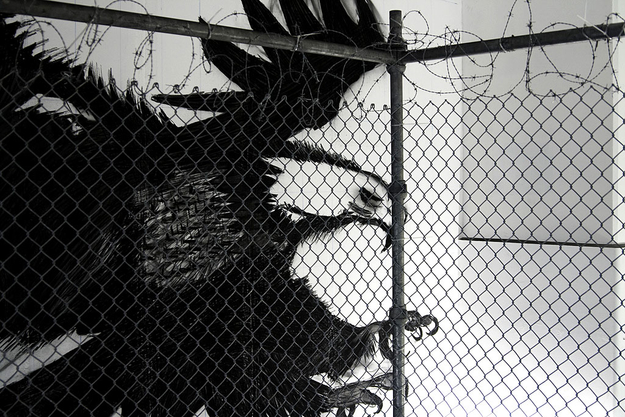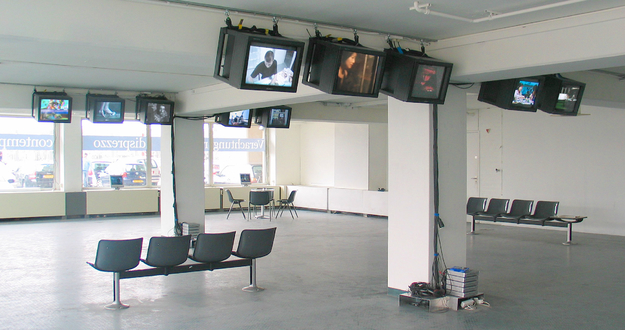The 'postmodern' togetherness
Godard portrays a collision between the United States and Europe from the sixties of the twentieth century, in which the Yankee money and the European conscience go for a walk: an artistically intended film about the Greek war hero Odysseus finally ends as a commercial kitsch adaptation. The curator of Le Mépris, Moniek Voulon, saw this story as an analogy of the events that led to the Iraqi war. As Godard shows how the cunning but jovial American filmproducer manages to break in the European script writer, Voulon pointed out how president Bush and his hawks managed to include the Europeans -and the Netherlands- in this horrible war.
In Le Mépris, Voulon wanted to show the construction of angst and the deliberately causing a feeling of loss of identity. The 'postmodern' togetherness and the mixing of fiction and reality -characteristic for both contemporary art and the real world- has caused an ambiguous atmosphere. While Godard only preludes to this ambiguity in his film, it seemed to be the time for further analysis.
An airport terminal
Le Mépris calls the anonymous atmosphere that in general belongs to the crossing of a border. To achieve this atmosphere, Voulon modelled the Mediamatic exhibition space after an airport terminal. Not necessarily the departure area or the transit area, but more the arrivals. The area knows no character, an undefined zone, a space as a metaphor for society of late. Here we arrived in no man's land, not realistic but metaphoric and symbolic. It immediately reminded us of the shocking images from the torture centra of the American army in Guatanamo Bay. Because the visitor recognized the repulsive military tactics and methods, no departure or arrival times are displayed on the monitors. Here they display the videoart of a group of international artists who did not want to hide their critique of Bush's vengeful behaviour. These closely juxtaposed visual statements portray the worry and anger about the invasion and occupation of Iraq. But as visual sound bit they also reflected the problematic excess and the complexity of mass media.
Bardot
Brigitte Bardot was also a center of attention. In Godard's Le Mépris, her physical beauty is paired with an exemplary moral conviction. Although she is not yet the angel who saves the day (the project simply goes on, and Bardot dies in a terrible traffic accident), but only she, in the midst of disturbing banalities, shows a strong moral and artistic conscience. Her contempt for the European who finally breaks for money is also the origin of the powerful title Le Mépris.
The artists
The group of international artists who partook in this exhibition represented multiple generations, familiar names from the sixties but also a young and upcoming generation of filmmakers.
HENK BOVERHOFF / JIM COSTANZO / MARLENE DUMAS / ERIK KESSELS / LARS EIJSSEN / SIMON FERDINANDO / ATOUSA BANDEH GHIASABADI / PAUL GROOT / MATHILDE TER HEIJNE / FOW PYNG HU / JORGOS LOUKAKOS & MADELEINE AKTYPI / ASAKO NISHIMURA / DAISUKE NISHIMURA / YOKO ONO /YOSHIRO OSAKA / FEDERICO D’ORAZIO / DAVID SMITHSON / JEROME SYMONS/VITTORIO SANTORO / / MONIEK VOULON / KAORA YAMAMOTO / SIETSKE TJALLINGII / ANJE ROOSJEN








